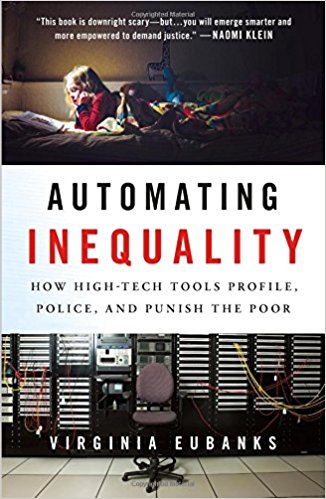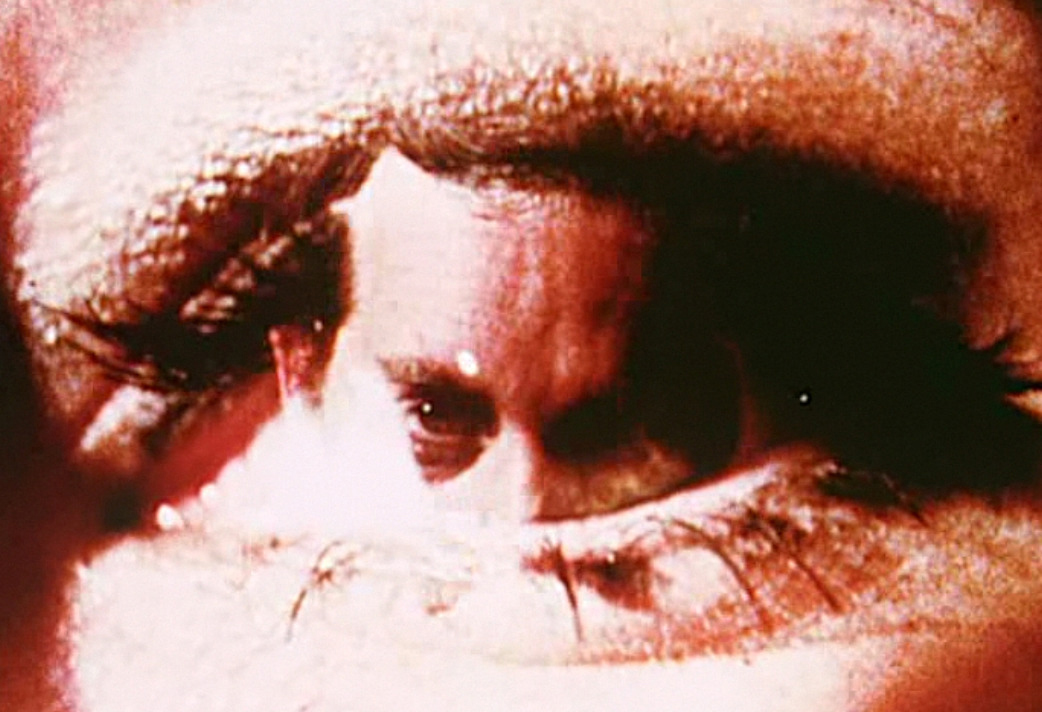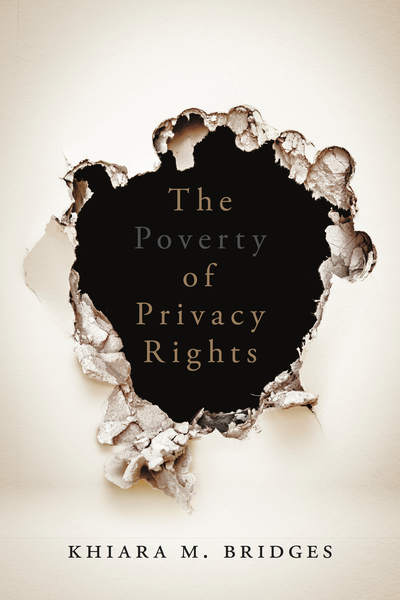 An audio version of this essay is available to subscribers, provided by curio.io.
An audio version of this essay is available to subscribers, provided by curio.io.
In the liberal imagination, government surveillance threatens everyone: a watchful eye hovering over an undifferentiated public. Privacy, in turn, is that which safeguards our individuality, defining the spaces in which the citizen cannot be governed. “Privacy is the right to a self,” Edward Snowden said in 2016. “Privacy is what gives you the ability to share with the world who you are on your own terms.” For Snowden, privacy is the “fountainhead” of all rights. Without a “quiet space, a space within yourself” beyond the reach of the state, free and democratic engagement is impossible.

Virginia Eubanks, Automating Inequality: How High-Tech Tools Profile, Police, and Punish the Poor. St. Martin’s Press, 2017. 265 pages.
This reality is transparent in the case of policing. The Fourth Amendment—which protects against unwarranted search and seizure—is spatially defined. Individuals have a “reasonable expectation of privacy” from the eyes and ears (and noses) of the state in places where they can reasonably expect not to be overheard or observed by others. You have the most privacy in your home, somewhat less in your car, and hardly any on a public street. Thus, those who can afford more private space will inevitably have more privacy. People who live in densely packed neighborhoods and thin-walled apartment complexes, who have little “curtilage” surrounding their homes, who live their private lives in public spaces, have considerably less. The homeless—who, by necessity, live in public space and have tenuous property claims to their makeshift dwellings—have barely any Fourth Amendment rights at all. Like many of liberalism’s guarantees, privacy is not a universal right but a class right: guaranteed to those who can buy it.
When a middle-class white person imagines a privacy violation, they tend to think of an embarrassing disclosure of personal information: their sexts posted online, their email address leaked in the Ashley Madison hack. Some may imagine the “creepy-crawly” feeling of being watched. Indiana University School of Law professor James P. Nehf has written, reflecting the perception of many scholars, “Privacy is seldom a matter of life and death.” But for the poor and marginal, invasions of privacy are often lethal matters. A stop-and-frisk can easily end in a police shooting. Data shared from a registry can lead to arrests or deportation. Scrutiny from a caseworker can tear a family apart.
In the past few years, a wave of new scholarship has emerged that underscores the inadequacy of universalist privacy discourse. In order to protect against the tangible harms of surveillance, these scholars say, civil libertarians must attend to the particular.
While many liberal privacy advocates warn that a dystopian society is around the corner—unless, say, proper limits are placed on law-enforcement access to cell-phone data or communications collected by the National Security Agency—these new scholars argue that a huge portion of the American public already lives in a privacy-free rights environment. Through their close attention to social history, a new picture of privacy emerges: less like a universal right than like a privilege of whiteness and wealth. The laws that protect some from the scrutiny of the state have never protected those whom the state seeks to confine and control. For the poor and marginal, the nightmare scenario is already here.
From the plantation to the penitentiary, surveillance and punishment originated in America as projects of social control. The slave system was enabled by a trio of information technologies—the slave pass, the fugitive slave poster, and the slave patrol—which together enabled the planter class to exert dictatorial rule, projecting their power throughout the antebellum South.
Plantation ledger books served as proto-biometric databases, recording not only financial records but the physical characteristics of enslaved persons’ bodies, their labor and reproductive capacities. Plantation architecture facilitated intervisibility between the overseer and the slave, from the verandas of the big house to the slave quarters and fields. These interlocking systems—enabled by sight, terror, and violence—were designed to disrupt solidarity among enslaved peoples, prevent runaways, and, most of all, deter and quell rebellion.
In northern cities, regulation of vice fell not to the courts but to constables, night watchmen, and jailors, who were given wide latitude in their choice of punishment. They paid special attention to unruly working-class women—those, as Jen Manion documents in her excellent 2015 history Liberty’s Prisoners: Carceral Culture in Early America, who were “too poor, too loud, too sexual, too drunk, or too independent.” Anyone who posed a perceived threat to the white heterosexual family, or its gendered division of labor, attracted the attention of the authorities. By 1807, Manion writes, the poor were just as likely to be held for what they did not have, a job or a home, as for how they behaved. Poverty itself was the crime.
Virginia Eubanks’s new book, Automating Inequality: How High-Tech Tools Profile, Police, and Punish the Poor, which came out in January, extends this historical trajectory into the 21st century. Despite the successes of abolitionist, labor, civil rights, and feminist movements, America’s prisons are still warehouses for the poor, the police state is still mainly a means of regulating the lower orders, and the watchful eye of the modern-day constable is still trained primarily on the poor, the brown, the defiant, and the marginal. Eubanks, an associate professor of political science at the University at Albany, SUNY, has spent her career illuminating how our systems of provision and punishment collude to control and survey the poor, who are presumed to be dangerous social deviants.
Automating Inequality explores how the brick-and-mortar poorhouse of the 19th century has been replaced by the “digital poorhouse” of today. In the contemporary welfare system, poor people’s worthiness for benefits and their propensity for criminality are assessed by data-mining computer algorithms, which, contrary to the hopes of their proponents, tend to recreate and exacerbate inequality. Eubanks explores three experiments in which algorithms are replacing or augmenting human decision-making —Indiana’s automated Medicaid eligibility process, Los Angeles’s coordinated entry system for the homeless, and Allegheny County of Pennsylvania’s predictive algorithm for assessing childhood risk of abuse and neglect.
With the exception of the Indiana program—part of a statewide privatization effort led by Republican Governor Mitch Daniels, who would probably means-test trick-or-treaters if he could—the systems Eubanks encounters were at least devised with the welfare of the vulnerable in mind. LA’s registry, “touted as the Match.com of homeless services,” was supposed to distribute housing resources to the neediest with an efficiency and precision that a lurching municipal bureaucracy could never achieve. The Allegheny Family Screening Tool (AFST), launched in August 2016, was designed to eliminate the human bias that leads caseworkers to overreport nonwhite families as maltreatment risks—and overlook the signs of abuse elsewhere.
In practice, however, automated systems rely on the collection of ever more intimate details about the lives of welfare beneficiaries, cataloguing, classifying, and ranking “their traumas, coping mechanisms, feelings, and fears.” From the moment they apply, welfare applicants find themselves ensnared in a web of surveillance, subject to persistent scrutiny, a presumption of guilt, invasive interrogations, coercion of their reproductive choices, and violations of their bodily and decisional autonomy. In the supposed interest of preventing fraud, saving taxpayer dollars, and protecting children, the state forces poor families to bare themselves, interrogating every purchase, every parenting decision, every relationship.
Automation undermines due process and fails to address the underlying causes of poverty. These systems collect and produce data that justify the status quo and criminalize desperation. The Allegheny algorithm treats the use of public services itself as a risk to children. “A quarter of the predictive variables in the AFST,” Eubanks reports, “are direct measures of poverty: they track use of means-tested programs such as TANF, SSI, SNAP, and county medical assistance.” That means that poor families are at a higher risk of being investigated for neglect and abuse if they take advantage of the services available to care for their children.
The homeless in LA face a comparable devil’s choice. In order to access housing resources, homeless men and women in LA must fill out a “vulnerability index” entry survey. The survey solicits an array of personal information: social security number, full name, birth date, demographic information, veteran status, immigration and residency status, and where the respondent can be found at various times of day. It also asks intimate questions about the applicants’ experiences with domestic violence, sexual assault, self harm, drug abuse, sex work, and mental health. Admitting “risky, or even illegal, behavior” on the entry survey, Eubanks found, can “snag you a higher ranking on the priority list for permanent supportive housing.” But it also makes you more vulnerable to the police. The self-reported data in the LA registry is made available to the LAPD without a warrant, departmental oversight, or judicial review of any kind.
Most of all, Eubanks demonstrates, increased digital scrutiny and automation further isolate the poor from the affluent, undermining the intimate interactions that facilitate empathy—or, better yet, solidarity. “Like earlier technological innovations in poverty management,” Eubanks writes, “digital tracking and automated decision-making hide poverty from the middle-class public and give the nation the ethical distance it needs to make inhuman choices.” It’s easier, after all, for a caseworker to change a zero to a one than to face, in person, the parents of 6-year-old Sophie Stipes, a severely disabled child whose Medicaid benefits were cancelled by Indiana’s automated system. The digital poorhouse reframes questions of justice as questions of efficiency. Algorithms score individuals, deciding how to distribute scarce resources, but in so doing they reify scarcity. “Homelessness is not a systems engineering problem,” UCLA law professor Gary Blasi told Eubanks. “It’s a carpentry problem.” As with the county poorhouses of yore, Eubanks writes, automation is a means of managing the poor, “so that we do not have to eradicate poverty.”
Eubanks’s book is a rejoinder to the bloodless numericalization of social problems that typifies the neoliberal approach to welfare. Automating Inequality is filled with tender, humane stories about people on both sides of public provision. Gary Boatwright, a 64-year-old homeless man affectionately known as “Commander Kush” by his neighbors, offers Eubanks his bottle of water—a precious commodity on Skid Row—when she comes to visit his tent. Patrick Grzyb and Angel Shepherd, disabled and unemployed, live with Angel’s 9-year-old daughter Harriette and Patrick’s six-year-old granddaughter Deseraye. When the girls bicker, Patrick has each of them don a sleeve of the “Get-Along-Shirt,” one of Patrick’s “roomy button-downs,” until they stop fighting. The mixed, intergenerational family has faced a series of neglect investigations by the Allegheny Office of Children, Youth, and Families (CYF). Pat Gordon, a CYF caseworker, Eubanks writes, “is the kind of woman who keeps pictures of other people’s children in her cubicle. . . . Her mischievous laugh quickly transitions to quiet seriousness” when she discusses the kids she serves.
Typically, Eubanks observes, stories about the poor only have two lessons, either “‘You should feel sorry for the poor’ or ‘You shouldn’t.’” With these complex, intimate portraits, Eubanks seeks to break the ideological injunction that our narratives of poverty orbit around worthiness. Paraphrasing the journalist Monica Potts, Eubanks observes, when it comes to depictions of the hard up, Americans tend only to tolerate “illustrations of suffering, litanies of misery, or morality plays of bad choices and their consequences.” But human beings aren’t object lessons for the middle class.
For Eubanks, defeating the moral mythology of poverty, which has persisted in America since the founding, is pivotal to rectifying the wrongs of the digital poorhouse. The notion that poverty is primarily a consequences of moral lack sooths the consciences of the middle class, underlies the assumption that poor people are bad parents, and justifies a system of permanent totalitarian surveillance in their lives.
Eubanks is but one of a number of scholars who reject these mainstream premises about privacy and surveillance. Indeed, as she and others show, the legal regime of privacy was never intended to protect them in the first place.
In her 2016 book The Poverty of Privacy Rights, Boston University legal scholar Khiara Bridges documents how women on welfare are denied spatial, decisional, and informational privacy in nearly every aspect of their lives. They are subject to invasive, sometimes retraumatizing, questioning as a prerequisite for attaining benefits. Through restrictions on funding elective abortion and family-cap policies for mothers on welfare, the state intrudes upon the most intimate decisions of their lives: variously forcing women to give birth and to terminate pregnancies against their wills. Courts have consistently upheld warrantless searches of welfare recipients’ homes—supposedly the most sacred place in Fourth Amendment doctrine—to search for evidence of fraud. The courts reason that welfare applicants have an “uncoerced” choice to refuse a home visit, because there is no penalty for refusing to consent—other than the denial of benefits. But of course, it betrays a profound indifference to the lived experience of poor people to suggest that the threat of losing benefits is not coercion. As legal scholar Chris Slobogin has noted, those suspected of tax fraud—a crime whose cost to the American taxpayer is incomparably more severe—enjoy the full protection of the Fourth Amendment, while those suspected of welfare fraud receive none.
The government’s justification for its punitive and intrusive approach to welfare is its interest in protecting poor children and reducing fraud. But our government also declines to do the very thing we know would contribute most to poor children’s safety and health: make their families less poor. One in five American children lives in poverty; American children are ranked 26th among rich countries in terms of “overall well-being”; and we spend among the least on benefits and services to families. America’s stingy approach to public benefits contradicts our supposedly dogged commitment to safeguarding poor children. Instead, our punitive welfare state seeks to “correct” the bad behavior of poor mothers—whose moral flaws are presumed to account for their poverty—while declining to provide for their needy children.
The best way to eliminate the more punitive, suspicious, and stigmatizing aspects of the welfare system would be to abandon means-tested benefits altogether. In its place, we could have a universal basic income or system of universal child allowances. A universal benefit alleviates the need for persistent state scrutiny and intrusive data collection—because everyone gets it regardless of need. Universal benefits (like social security and Medicare) also help to diminish the stigmatizing and isolating aspects of means-testing. It’s harder to scapegoat and demonize poor black mothers—a persistent theme in anti-welfare rhetoric—when every American family is receiving cash benefits.
We would do well to abandon the popular understanding of the privacy-rights bearer as an affluent white man—unburdened by history, by power, by coercion. He bears almost no resemblance to those who endure the worst consequences of surveillance. The embrace of such a figure by civil-liberties groups routinely limits our ability to imagine the privacy harms experienced by nonwhite, nonmale, and nonrich people. The right “to be let alone,” as Brandeis and Warren explained in their 1890 articulation of legal privacy, is of little use to those whose economic circumstances necessitate a life of interdependence. The common law principle that a “home is man’s castle,” is worthless if you don’t have a home.
Those of us who believe in privacy as a fundamental right—a guarantee of human dignity, autonomy, and self-determination—should also advocate for policies to correct the massive inequalities in wealth and power that make the equitable enjoyment of privacy impossible.

